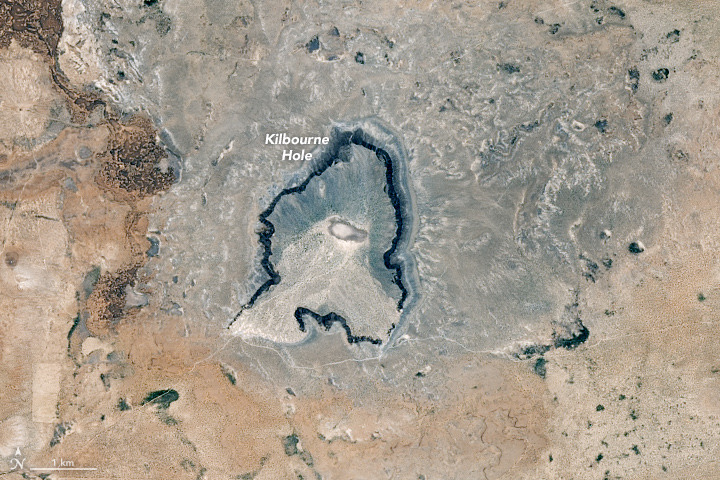Image: Kilbourne Hole NM
Description: Kilbourne Hole is a maar crater and one of Potrillo’s most distinctive features. It was created about 24,000 years ago by the explosive interaction of hot magma and an aquifer. Magma rising from deep within the Earth heated the underground water, producing steam. Pressure built up, culminating in an explosion that blew out an irregularly shaped hole more than a mile across, 1.7 miles long, and hundreds of feet deep. The blast scattered material far and wide and exposed layers of rock that preserved the history of Kilbourne’s bygone water. Among geologists, Kilbourne is also known for its xenoliths—rocks that harbor bits of crust or mantle material. Several kinds of xenoliths are found in and around Kilbourne, especially those containing olivine, the greenish mineral of the gemstone peridot. The presence of olivine can indicate material from the mantle, and olivine-rich rocks were among those brought back from the Moon by the Apollo missions.
Title: Kilbourne Hole NM
Credit: https://earthobservatory.nasa.gov/IOTD/view.php?id=90986&src=eoa-iotd
Author: NASA Earth Observatory images by Jesse Allen, using Landsat data from the U.S. Geological Survey
Permission: Public domainPublic domainfalsefalse This file is in the public domain in the United States because it was solely created by NASA. NASA copyright policy states that "NASA material is not protected by copyright unless noted". (See Template:PD-USGov, NASA copyright policy page or JPL Image Use Policy.) Warnings: Use of NASA logos, insignia and emblems is restricted per U.S. law 14 CFR 1221. The NASA website hosts a large number of images from the Soviet/Russian space agency, and other non-American space agencies. These are not necessarily in the public domain. Materials based on Hubble Space Telescope data may be copyrighted if they are not explicitly produced by the STScI.[1] See also and Template:Cc-Hubble. The SOHO (ESA & NASA) joint project implies that all materials created by its probe are copyrighted and require permission for commercial non-educational use. [2] Images featured on the Astronomy Picture of the Day (APOD) web site may be copyrighted. [3] The National Space Science Data Center (NSSDC) site has been known to host copyrighted content. Its photo gallery FAQ states that all of the images in the photo gallery are in the public domain "Unless otherwise noted."
Usage Terms: Public domain
License: Public domain
Attribution Required?: No
Image usage
The following page links to this image:


